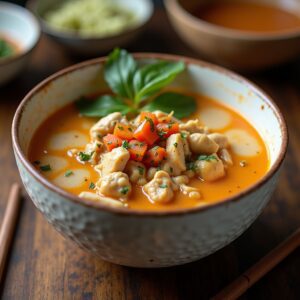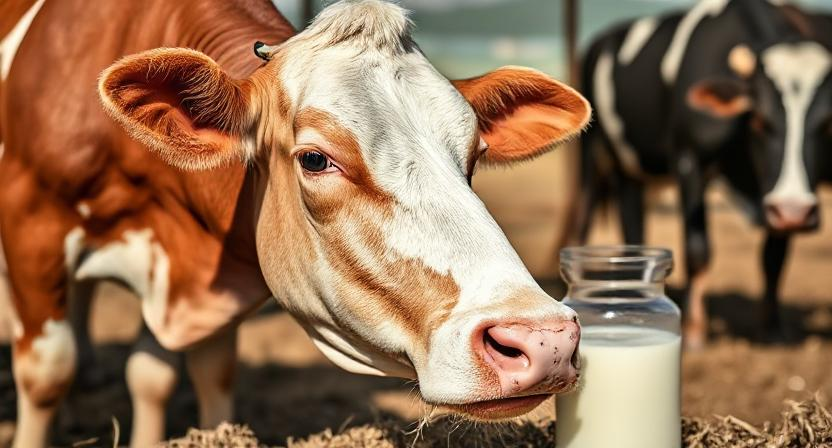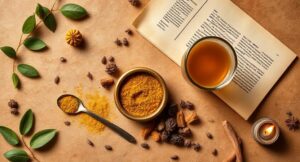

Make 'Raw Milk' Just 'Milk' Again: A Closer Look at the Raw Milk Debate


Arya Soleil
Raw milk, once a staple in households across the globe, is now labeled with caution and surrounded by controversy. In many places, it’s banned, restricted, or heavily regulated. Yet a growing number of health-conscious consumers and small farmers argue that raw milk is not only safe when handled properly but also nutritionally superior to its pasteurized counterpart. So why is it still considered controversial? And why do people want to “make raw milk just milk again”?
This article dives deep into the history, science, and political landscape surrounding raw milk and explores the case for its normalization in modern food systems.
What Is Raw Milk?
Raw milk is simply milk that has not been pasteurized or homogenized. It comes straight from the cow (or goat or sheep) and is typically filtered and chilled, but not heat-treated. Pasteurization, which involves heating milk to kill bacteria, became standard in the 20th century in response to food safety concerns during the rise of industrial agriculture.
Nutritional Benefits of Raw Milk
Advocates of raw milk believe pasteurization destroys or diminishes key nutrients and enzymes:
- Enzymes – Raw milk contains lactase, lipase, and phosphatase, which aid in digestion and nutrient absorption. These enzymes are mostly destroyed by pasteurization.
- Probiotics – Naturally occurring beneficial bacteria may support gut health and immune function.
- Vitamins – Some heat-sensitive vitamins, like B6, B12, and C, may be partially degraded during pasteurization.
- Calcium and Fat Solubility – Supporters claim that raw milk’s calcium and fat-soluble vitamins (A, D, E, and K2) are more bioavailable than in processed milk.
Health and Safety Concerns
The major argument against raw milk is the risk of foodborne illness. Raw milk can contain pathogens like E. coli, Salmonella, Listeria, and Campylobacter—especially if hygiene practices on the farm are poor.
However, raw milk proponents argue that:
- Proper handling, cleanliness, and refrigeration greatly reduce contamination risk.
- Small, grass-fed dairy farms often have lower bacterial counts than large industrial dairies.
- Pasteurized milk has also been linked to outbreaks of illness—it’s not immune to contamination.
Studies and data on illness from raw milk vary. Critics cite rare but serious outbreaks, while advocates highlight the statistically low rate of illness when compared to other foods like deli meats, leafy greens, or shellfish.
Historical Context: From Staple to Scapegoat
In the early 1900s, milk was one of the most dangerous foods due to poor urban sanitation, overcrowded dairies, and lack of refrigeration. Pasteurization helped reduce outbreaks and earned its place as a public health victory. But the conditions that necessitated pasteurization—unsanitary industrial production—are not present on today’s small, well-run farms.
As industrial dairy scaled up, so did the pressure to apply a one-size-fits-all safety solution. Pasteurization became legally mandated in most states, effectively sidelining traditional, small-scale producers and reshaping the industry in favor of mass production.
Raw Milk vs. Pasteurized Milk: What’s the Difference?

Legal and Regulatory Barriers
In the U.S., raw milk is legal in some states, banned in others, and heavily regulated elsewhere. The FDA prohibits interstate sales of raw milk, meaning farmers can’t sell it across state lines—even if it’s legal in both states.
- Direct-to-consumer laws vary, with some states allowing farm sales, herd shares, or delivery.
- Lobbying by industrial dairy associations plays a major role in maintaining raw milk restrictions, often under the guise of safety.
This patchwork of laws makes it difficult for small farmers to compete and for consumers to access what they believe is a healthier, more natural product.
The Movement to Reclaim Raw Milk
Across the country, farmers, nutritionists, and activists are fighting to restore raw milk’s place in the food system. Their arguments include:
- Informed choice – Consumers should be free to choose the type of milk they consume.
- Food freedom – Government shouldn’t overreach into private dietary decisions.
- Transparency – Raw milk producers are often more transparent and community-focused.
- Reviving local agriculture – Allowing raw milk sales supports small, diversified farms over industrial agriculture.
Addressing Misconceptions
Raw milk is often portrayed as risky or irresponsible, but many misconceptions persist:
- “Raw milk is dirty” – Not true when sourced from clean, grass-fed farms using sanitary practices.
- “Raw milk is illegal” – False; it’s legal in many places and accessible through farm shares or pet milk loopholes.
- “Pasteurization guarantees safety” – While it reduces certain risks, it doesn’t eliminate them—especially post-processing contamination.
How to Safely Source and Use Raw Milk
If you’re considering raw milk, follow these guidelines:
- Know your farmer – Visit the farm, ask about hygiene and testing protocols.
- Look for grass-fed herds – These produce higher-quality milk with better nutrient profiles.
- Use quickly and store cold – Raw milk has a shorter shelf life and should be kept under 40°F.
- Start slow – If new to raw milk, introduce it gradually to gauge your body’s response.
Conclusion: Returning to Common Sense and Choice
The debate around raw milk is not just about dairy—it’s about food freedom, informed choice, and the right to reconnect with traditional, nutrient-rich food sources. With modern hygienic practices, transparency, and small-scale farming, many of the risks that once justified universal pasteurization no longer apply.
It’s time to question outdated assumptions and regulatory overreach that criminalize a food humans have consumed safely for millennia. For many, the goal is clear: make raw milk just “milk” again, and let consumers decide what belongs on their table.
Recommended Reads

- June 9, 2025
Castor Oil in the Navel: A Forgotten Practice That Supports Digestion and Sleep
Home News Healthy Habits & Lifestyle Health Conditions &...


- June 9, 2025
Turmeric for Ulcers: A Natural Way to Soothe and Protect Your Stomach
Home News Healthy Habits & Lifestyle Health Conditions &...


- June 9, 2025
The Healing Power of Castor Oil Compresses: A Natural Therapy for Detox, Sleep, and Circulation
Home News Healthy Habits & Lifestyle Health Conditions &...


- June 9, 2025
Medicinal Mushrooms: Ancient Remedies with Modern Benefits
Home News Healthy Habits & Lifestyle Health Conditions &...


- June 9, 2025
Triphala: The Ancient Herbal Blend That Supports Digestion, Detox, and Longevity
Home News Healthy Habits & Lifestyle Health Conditions &...


- June 9, 2025
Mullein: Herbal Support for Lung Health and Clear Breathing
Home News Healthy Habits & Lifestyle Health Conditions &...

Make 'Raw Milk' Just 'Milk' Again: A Closer Look at the Raw Milk Debate

Raw milk, once a staple in households across the globe, is now labeled with caution and surrounded by controversy. In many places, it’s banned, restricted, or heavily regulated. Yet a growing number of health-conscious consumers and small farmers argue that raw milk is not only safe when handled properly but also nutritionally superior to its pasteurized counterpart. So why is it still considered controversial? And why do people want to “make raw milk just milk again”?
This article dives deep into the history, science, and political landscape surrounding raw milk and explores the case for its normalization in modern food systems.
What Is Raw Milk?
Raw milk is simply milk that has not been pasteurized or homogenized. It comes straight from the cow (or goat or sheep) and is typically filtered and chilled, but not heat-treated. Pasteurization, which involves heating milk to kill bacteria, became standard in the 20th century in response to food safety concerns during the rise of industrial agriculture.
Nutritional Benefits of Raw Milk
Advocates of raw milk believe pasteurization destroys or diminishes key nutrients and enzymes:
- Enzymes – Raw milk contains lactase, lipase, and phosphatase, which aid in digestion and nutrient absorption. These enzymes are mostly destroyed by pasteurization.
- Probiotics – Naturally occurring beneficial bacteria may support gut health and immune function.
- Vitamins – Some heat-sensitive vitamins, like B6, B12, and C, may be partially degraded during pasteurization.
- Calcium and Fat Solubility – Supporters claim that raw milk’s calcium and fat-soluble vitamins (A, D, E, and K2) are more bioavailable than in processed milk.
Health and Safety Concerns
The major argument against raw milk is the risk of foodborne illness. Raw milk can contain pathogens like E. coli, Salmonella, Listeria, and Campylobacter—especially if hygiene practices on the farm are poor.
However, raw milk proponents argue that:
- Proper handling, cleanliness, and refrigeration greatly reduce contamination risk.
- Small, grass-fed dairy farms often have lower bacterial counts than large industrial dairies.
- Pasteurized milk has also been linked to outbreaks of illness—it’s not immune to contamination.
Studies and data on illness from raw milk vary. Critics cite rare but serious outbreaks, while advocates highlight the statistically low rate of illness when compared to other foods like deli meats, leafy greens, or shellfish.
Historical Context: From Staple to Scapegoat
In the early 1900s, milk was one of the most dangerous foods due to poor urban sanitation, overcrowded dairies, and lack of refrigeration. Pasteurization helped reduce outbreaks and earned its place as a public health victory. But the conditions that necessitated pasteurization—unsanitary industrial production—are not present on today’s small, well-run farms.
As industrial dairy scaled up, so did the pressure to apply a one-size-fits-all safety solution. Pasteurization became legally mandated in most states, effectively sidelining traditional, small-scale producers and reshaping the industry in favor of mass production.
Raw Milk vs. Pasteurized Milk: What’s the Difference?

Legal and Regulatory Barriers
In the U.S., raw milk is legal in some states, banned in others, and heavily regulated elsewhere. The FDA prohibits interstate sales of raw milk, meaning farmers can’t sell it across state lines—even if it’s legal in both states.
- Direct-to-consumer laws vary, with some states allowing farm sales, herd shares, or delivery.
- Lobbying by industrial dairy associations plays a major role in maintaining raw milk restrictions, often under the guise of safety.
This patchwork of laws makes it difficult for small farmers to compete and for consumers to access what they believe is a healthier, more natural product.
The Movement to Reclaim Raw Milk
Across the country, farmers, nutritionists, and activists are fighting to restore raw milk’s place in the food system. Their arguments include:
- Informed choice – Consumers should be free to choose the type of milk they consume.
- Food freedom – Government shouldn’t overreach into private dietary decisions.
- Transparency – Raw milk producers are often more transparent and community-focused.
- Reviving local agriculture – Allowing raw milk sales supports small, diversified farms over industrial agriculture.
Addressing Misconceptions
Raw milk is often portrayed as risky or irresponsible, but many misconceptions persist:
- “Raw milk is dirty” – Not true when sourced from clean, grass-fed farms using sanitary practices.
- “Raw milk is illegal” – False; it’s legal in many places and accessible through farm shares or pet milk loopholes.
- “Pasteurization guarantees safety” – While it reduces certain risks, it doesn’t eliminate them—especially post-processing contamination.
How to Safely Source and Use Raw Milk
If you’re considering raw milk, follow these guidelines:
- Know your farmer – Visit the farm, ask about hygiene and testing protocols.
- Look for grass-fed herds – These produce higher-quality milk with better nutrient profiles.
- Use quickly and store cold – Raw milk has a shorter shelf life and should be kept under 40°F.
- Start slow – If new to raw milk, introduce it gradually to gauge your body’s response.
Conclusion: Returning to Common Sense and Choice
The debate around raw milk is not just about dairy—it’s about food freedom, informed choice, and the right to reconnect with traditional, nutrient-rich food sources. With modern hygienic practices, transparency, and small-scale farming, many of the risks that once justified universal pasteurization no longer apply.
It’s time to question outdated assumptions and regulatory overreach that criminalize a food humans have consumed safely for millennia. For many, the goal is clear: make raw milk just “milk” again, and let consumers decide what belongs on their table.
Recommended Reads

- June 9, 2025
Castor Oil in the Navel: A Forgotten Practice That Supports Digestion and Sleep
Home News Healthy Habits & Lifestyle Health Conditions &...


- June 9, 2025
Turmeric for Ulcers: A Natural Way to Soothe and Protect Your Stomach
Home News Healthy Habits & Lifestyle Health Conditions &...


- June 9, 2025
The Healing Power of Castor Oil Compresses: A Natural Therapy for Detox, Sleep, and Circulation
Home News Healthy Habits & Lifestyle Health Conditions &...


- June 9, 2025
Medicinal Mushrooms: Ancient Remedies with Modern Benefits
Home News Healthy Habits & Lifestyle Health Conditions &...


- June 9, 2025
Triphala: The Ancient Herbal Blend That Supports Digestion, Detox, and Longevity
Home News Healthy Habits & Lifestyle Health Conditions &...


- June 9, 2025
Mullein: Herbal Support for Lung Health and Clear Breathing
Home News Healthy Habits & Lifestyle Health Conditions &...



